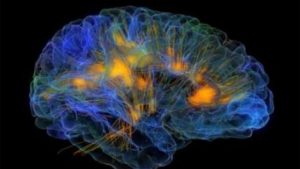Healthcare today has gained a much-revised shape with technology as an integral part of it. Ever since technology has invaded every sphere of our lives, it has also changed the dimensions of the medical care sector and its standards. The service expectations and service provisions have become coincident with technological advancement.
The quality of medical services provided and the diagnostic services have improved considerably with technology playing the cards of the medical care industry. Also, several tasks that were considered troublesome have now become smoother and more comfortable to perform with the latest techniques and tools taking care of those.
One of the most critical advancements in the field of healthcare has been the introduction of AI-based technologies. With artificial technology, the sector is witnessing a paradigm shift from the traditional methods to the latest technology-based processes. The diagnostic works and the pathological services offer a lot to the healthcare industry.
Without proper pathological records, treating the diseases would become problematic these days. Hence, it is of paramount importance that the pathological tests and papers come out to be flawless and accurate. Technology has contributed in many ways to ensure that every pathological report is perfect to guarantee flawless treatment for all.
AI is also getting integrated with the pathological tests like Scan, MRI, etc. Gadolinium-based imaging has been one of the most popular options so far. However, owing to the elements of risks associated with this technique, several also vote against this method.
Sometimes detecting the exact condition of the diseases like brain tumors can be painful for the patients as the detection methods involve injections. However, with Gilomas, algorithms can be used to replace the painful way of making the entire process of detection of the tumor growth or condition easier and painless.

The Replacement
The healthcare domain today is thinking of imbibing the advantages of GBCA-based imaging methods with the virtual contrast enhancement method to make t apt and useful for the patients. Some are also of the opinion that the later variety must be replacing the former one shortly as the AI will become supportive of the intended replacement.
Especially when it comes to treating diseases as complex as tumors, the layers of detection and cure are both hazardous. A little misappropriation here or there can result in adverse consequences. For making the predictions perfect and the treatment flawless, it is therefore of much importance that AI comes up with a solution that will offer the best results for all. The researchers have already done quantitative and qualitative tests to make sure that the neuroradiology is going to be impacted positively.
Gilomas are known to be of two varieties. One is the enhancing variety, and the other one is the non-enhancing variety. For both types, quantitative and qualitative experiments have been done. The results seem to be more satisfying than not. The healthcare domain is looking forward to the innovations to make sure that the detection and treatment of diseases as critical as Gilomas will become easier.
However, in science, nothing comes without its backdrops. When an innovation hits the market, it comes with certain flaws as well. Over time, the same gets upgraded to assume a perfect shape. The virtual approach is also not without its drawbacks. Here is a brief of the problems that arise when imaging is done with the help of virtual methods. While gadolinium has its risk elements and is avoided by many physicians and radiologists across the world, virtual methods also come with specific problems.
The Problem With Virtual Images
The accuracy of the treatment depends on the efficiency of the images taken by the medical devices. If the exact brain condition cannot be traced from the image taken, the physicians would be in no position to be sure of the progress of the disease.
Therefore, it is of paramount importance that the images come crystal clear. Even the minute cell detail is required to be adequately imaged to be sure of the condition of the brain or any other part of the body getting imaged. However, the images were taken with virtual methods often become blurred, and the tiny vessels are missed out on several occasions. Therefore, it does not always lead to the accurate results that the radiologists or the physicians look for. Also, it might lead to confusion in diagnosis as well.
Technology must come up with a better solution to make sure that the images are clear and accurate so that a flawless conclusion can be reached.
At SepStream®, we abide by all the international norms and standards to keep the services at par with the requirements. We offer the latest techniques and methodologies that support our array of services to be of top-notch grade. Our services are available at reasonable rates for all, and we treat every client and project separately to ensure individual care and focus.